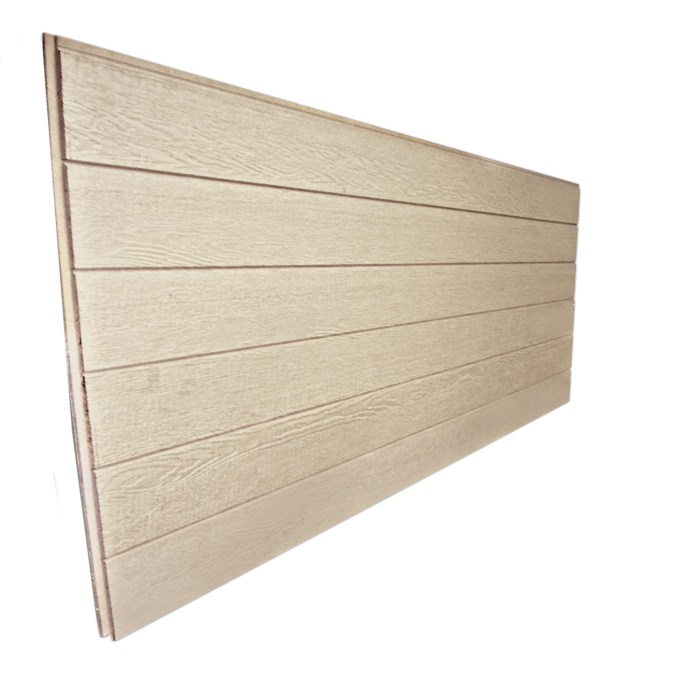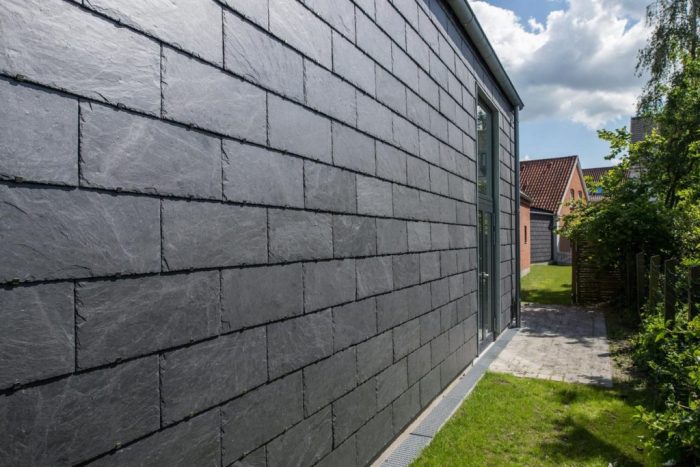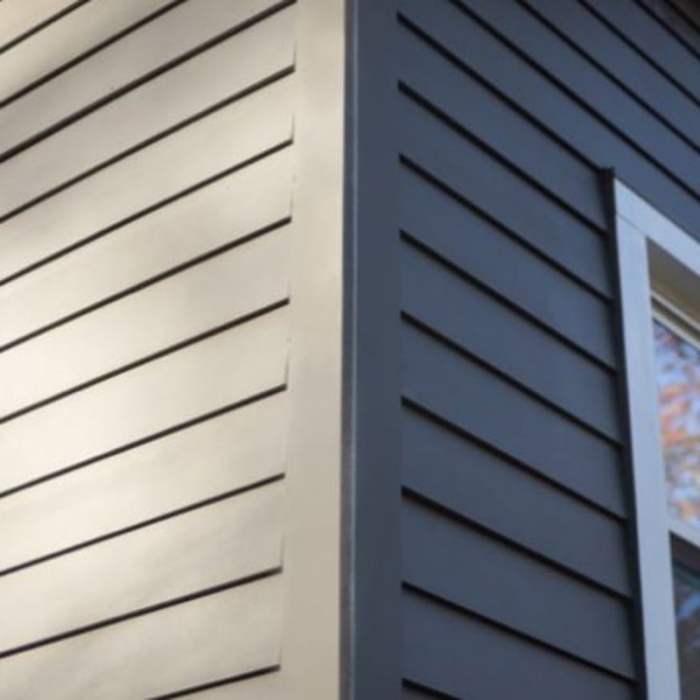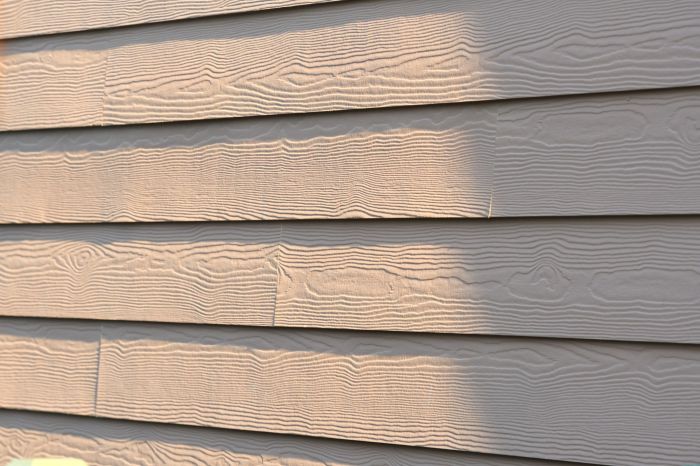American siding, a crucial element of any home’s exterior, offers a diverse range of materials and styles to enhance curb appeal and protect your investment. From the classic charm of wood siding to the low-maintenance practicality of vinyl, the choices are plentiful, each with its own unique advantages and disadvantages. This guide delves into the intricacies of American siding, exploring the various types available, installation techniques, maintenance best practices, environmental considerations, cost factors, and design aesthetics to help you make an informed decision for your home.
Understanding the nuances of each siding material—vinyl, wood, fiber cement, metal, and engineered wood—is crucial for choosing the best option for your specific needs and budget. We’ll compare lifespan, maintenance, and cost, while also exploring the aesthetic impact of different siding profiles like clapboard, shingle, and board and batten. We’ll even guide you through the installation process, providing tips for achieving a professional finish and ensuring long-lasting performance.
Types of American Siding
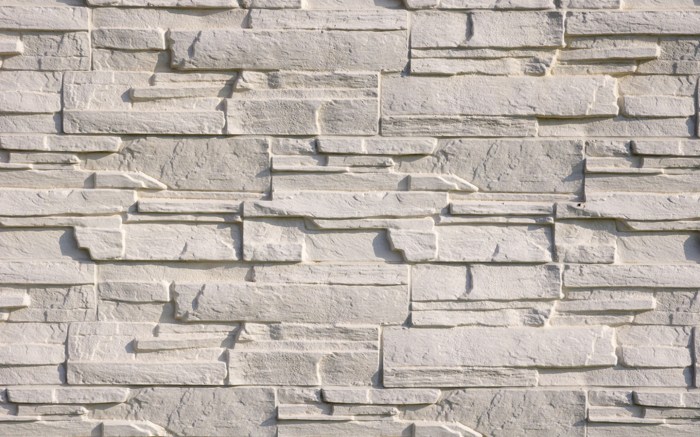
Choosing the right siding for your home is a crucial decision impacting aesthetics, durability, and maintenance. This section details the various types of American siding available, outlining their advantages, disadvantages, and comparative characteristics to aid in informed decision-making.
Vinyl Siding
Vinyl siding is a popular choice due to its affordability and low maintenance. It’s manufactured from polyvinyl chloride (PVC), offering a wide range of colors and styles to mimic wood or other materials. Advantages include its resistance to rot, insects, and moisture, requiring minimal upkeep. However, it can be susceptible to damage from impact, and its lifespan is shorter compared to some other options. Furthermore, vinyl siding’s appearance can be less desirable to some homeowners who prefer the more natural look of wood or the durability of other materials. Its color can fade over time, especially with prolonged sun exposure.
Wood Siding
Wood siding, a classic choice, offers a natural, aesthetically pleasing look. Various types of wood, such as cedar, redwood, and pine, provide distinct textures and colors. It’s a durable option when properly maintained, but requires regular upkeep to prevent rot, insect infestation, and weathering. This includes periodic painting or staining, and potential repairs for damaged sections. The cost can be significantly higher than vinyl siding, and its lifespan is dependent on the type of wood and maintenance practices.
Fiber Cement Siding
Fiber cement siding combines cement, cellulose fibers, and other additives, creating a durable and fire-resistant material. It mimics the look of wood but requires less maintenance. Its longevity and resistance to rot, insects, and fire are significant advantages. However, it’s more expensive than vinyl and can be more challenging to install, requiring professional expertise. The heavier weight also presents potential structural considerations for older homes.
Metal Siding
Metal siding, typically made of aluminum or steel, is extremely durable and resistant to fire, insects, and rot. It offers a low-maintenance solution with a long lifespan. However, it can dent easily and is prone to scratching, requiring careful handling during installation. Its metallic appearance might not be aesthetically pleasing to all homeowners, and expansion and contraction due to temperature changes can lead to noise issues.
Engineered Wood Siding
Engineered wood siding combines wood fibers with resins and other additives, creating a composite material that offers improved durability and moisture resistance compared to solid wood. It offers a natural wood aesthetic with enhanced performance. However, it’s more expensive than standard wood siding, and its long-term performance compared to other materials requires further long-term study. While offering improved resistance to rot and insects, it still needs some level of maintenance.
Siding Material Comparison
| Material Type | Lifespan (Years) | Maintenance | Cost (Relative) |
|---|---|---|---|
| Vinyl | 20-40 | Low | Low |
| Wood | 30-50+ (depending on wood type and maintenance) | Moderate to High | Medium to High |
| Fiber Cement | 50+ | Low to Moderate | High |
| Metal | 50+ | Low | Medium to High |
| Engineered Wood | 30-50+ (depending on product and maintenance) | Low to Moderate | Medium |
Aesthetic Differences in Siding Styles and Profiles
Siding styles and profiles significantly impact a home’s curb appeal. Clapboard siding, characterized by overlapping horizontal boards, creates a classic, traditional look. Shingle siding, with its individual shingle-like pieces, offers a more textured and rustic appearance. Board and batten siding, featuring wide vertical boards separated by narrow battens, provides a clean, modern aesthetic. The choice of profile can drastically alter the perceived size and proportion of a home. For instance, vertical siding can make a house appear taller, while horizontal siding can emphasize its width. A large home might benefit from a more subtle profile like clapboard, while a smaller home could be enhanced by the bolder look of board and batten.
Installation and Maintenance of American Siding
Proper installation and regular maintenance are crucial for ensuring the longevity and aesthetic appeal of American siding. Neglecting either can lead to premature damage, costly repairs, and a diminished curb appeal. This section details the best practices for both professional installation and ongoing upkeep of your siding.
Vinyl Siding Installation
Professional vinyl siding installation involves a series of meticulous steps, beginning with thorough preparation. This includes accurately measuring the area, ensuring a level surface, and properly preparing the underlying sheathing. Fastening techniques must be precise to prevent damage and ensure a weathertight seal. Finally, attention to finishing details contributes to the overall quality and appearance of the finished product.
Preparation: Before installation begins, the existing wall surface must be inspected for any rot, damage, or unevenness. Any necessary repairs should be completed. This often involves replacing damaged wood sheathing or addressing moisture problems. The surface should then be cleaned to remove dirt, debris, and loose paint. Finally, a moisture barrier, such as building wrap, should be installed to protect the underlying structure from water damage.
Fastening Techniques: Vinyl siding is typically fastened using galvanized nails or staples. The nails should be driven in the center of the nail holes near the top of each panel, allowing for expansion and contraction due to temperature changes. Over-driving nails can cause damage, while under-driving can lead to loose panels. It is essential to use the correct length and type of fasteners for the specific siding thickness and application.
Finishing Details: Proper installation of J-channel, corner trim, and other accessories is critical for a professional finish. These components provide a neat and weathertight seal at the edges and corners of the siding. Careful attention should be paid to ensuring proper alignment and overlap to prevent water penetration. End caps should be installed on all exposed ends of siding pieces to prevent moisture intrusion.
Vinyl Siding Maintenance
Maintaining vinyl siding involves regular cleaning, prompt repair of any damage, and preventative measures to protect it from the elements. Different cleaning methods may be necessary depending on the level of soiling. Repair techniques vary depending on the type of damage, ranging from simple patching to replacing damaged sections. Preventative measures focus on addressing potential problems before they escalate into significant damage.
Cleaning Methods: Regular cleaning helps prevent dirt and grime from building up and causing discoloration or damage. A simple solution of mild detergent and water, applied with a soft brush or sponge, is usually sufficient. For stubborn stains, a pressure washer can be used, but it’s crucial to maintain a safe distance to avoid damaging the siding. Always rinse thoroughly with clean water after cleaning. Avoid abrasive cleaners, which can scratch the surface.
Repair Techniques: Minor cracks or dents in vinyl siding can often be repaired using patching compounds designed for this purpose. Larger holes or damaged sections may require replacing the affected panels. When replacing panels, it’s important to ensure a proper fit and secure fastening to prevent further damage. It is advisable to consult with a professional for extensive repairs.
Preventative Measures: Regular inspections are crucial for identifying and addressing minor problems before they become major issues. Trimming overhanging branches that could scratch the siding and keeping gutters clean to prevent water damage are essential preventative measures. Proper landscaping can also help protect siding from excessive moisture and impact damage.
J-Channel and Corner Trim Installation, American siding
The following describes the visual guide for installing J-channel and corner trim for vinyl siding. Imagine a visual guide showing the steps Artikeld below.
Step 1: Installing the J-Channel: The J-channel is installed along the edges of the siding to provide a neat finish and allow for expansion and contraction. Start by aligning the J-channel with the edge of the sheathing, ensuring it’s level and plumb. Secure it using appropriate fasteners, spacing them evenly along the length.
Step 2: Installing Corner Trim: Corner trim is installed at the exterior corners of the house to provide a clean and weathertight finish. Align the corner trim with the corner of the house, ensuring it’s plumb and square. Secure it using appropriate fasteners, making sure to avoid over-driving the nails.
Step 3: Installing Siding into J-Channel and Corner Trim: The vinyl siding panels are then installed, slipping the bottom edge into the J-channel and the side edges into the corner trim. This creates a neat, seamless transition and prevents water from penetrating the wall.
Step 4: Final Inspection: After installation, conduct a final inspection to ensure all panels are properly aligned, secured, and weathertight. Address any issues immediately to prevent future problems.
Environmental Impact and Sustainability: American Siding
Choosing exterior siding involves more than just aesthetics; it significantly impacts the environment throughout its lifecycle. From material sourcing and manufacturing to installation and eventual disposal, each stage contributes to the overall environmental footprint. Understanding these impacts is crucial for making informed, sustainable choices for your home.
The environmental impact of siding varies greatly depending on the material used. Manufacturing processes consume energy and resources, and the sourcing of raw materials can have significant ecological consequences. For example, vinyl siding, while often inexpensive, relies on petroleum-based plastics, contributing to greenhouse gas emissions. Wood siding, conversely, is a renewable resource, but its production can involve deforestation and the use of harmful chemicals in treatment processes. Metal sidings, such as aluminum or steel, require significant energy input during manufacturing, but they are durable and recyclable. Finally, fiber cement siding, while more sustainable than vinyl, involves the use of cement, which has its own environmental impacts related to carbon emissions during production.
Manufacturing Processes and Material Sourcing
The manufacturing processes for different siding materials have varying levels of environmental impact. Vinyl siding production is energy-intensive and generates significant greenhouse gas emissions due to the use of fossil fuels. Wood siding production can lead to deforestation and habitat loss if not sourced sustainably from certified forests. The production of metal siding is also energy-intensive, requiring substantial amounts of electricity and contributing to carbon emissions. Fiber cement siding involves the use of cement, a major source of carbon dioxide emissions during its production. Sustainable sourcing practices, such as using reclaimed wood or recycled materials in manufacturing, can mitigate some of these impacts.
Energy Efficiency and Insulation Properties
Siding’s energy efficiency is a key factor in its overall environmental impact. Materials with superior insulation properties reduce the need for heating and cooling, thereby lowering energy consumption and greenhouse gas emissions. For instance, fiber cement siding, due to its density, offers better insulation than vinyl. Similarly, properly installed insulated vinyl siding can improve energy efficiency compared to uninsulated options. The R-value, a measure of thermal resistance, is a crucial indicator of a siding material’s insulating capabilities. Higher R-values indicate better insulation, resulting in lower energy bills and a smaller carbon footprint.
Sustainable Siding Alternatives
Several sustainable siding alternatives minimize environmental impact. These options prioritize the use of recycled materials, renewable resources, and energy-efficient designs. Consideration should also be given to the embodied energy of the material (the total energy consumed during its production and transportation).
- Recycled Plastic Siding: Made from post-consumer recycled plastics, reducing reliance on virgin materials.
- Reclaimed Wood Siding: Utilizing salvaged wood reduces the demand for newly harvested timber, preserving forests.
- Bamboo Siding: A rapidly renewable resource with relatively low environmental impact compared to traditional hardwoods.
- Insulated Vinyl Siding: Offers improved energy efficiency compared to standard vinyl siding, reducing heating and cooling costs.
- Fiber Cement Siding with Recycled Content: Some manufacturers incorporate recycled materials into their fiber cement products, further minimizing environmental impact.
Cost and Budgeting for American Siding
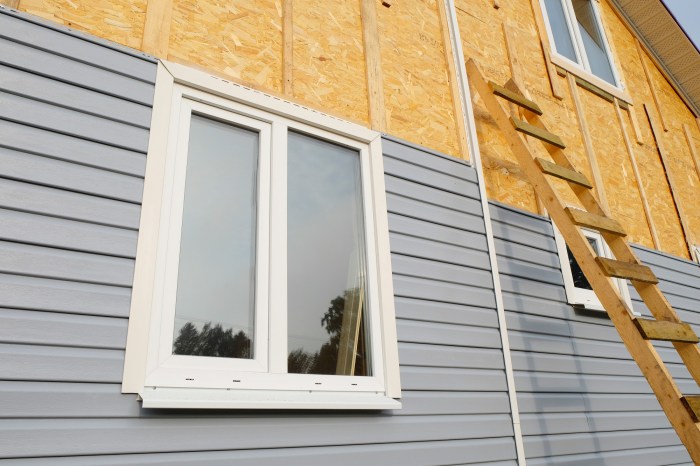
Replacing or installing American siding is a significant home improvement project with a wide range of cost implications. Understanding these costs, from materials to labor and unforeseen expenses, is crucial for effective budgeting and ensuring a successful project. This section will Artikel a sample budget, explore factors influencing overall cost, and demonstrate how to calculate the return on investment (ROI) for different siding options.
Sample Siding Installation Budget
A realistic budget should encompass all anticipated expenses. Failing to account for all potential costs can lead to project delays and financial strain. The following example illustrates a typical breakdown for a medium-sized home (approximately 1,500 square feet) using vinyl siding, a common and relatively affordable option. Remember, these are estimates, and actual costs can vary significantly based on location and specific project details.
| Expense Category | Estimated Cost |
|---|---|
| Materials (Siding, Trim, Fasteners) | $5,000 – $8,000 |
| Labor (Installation, Removal of Old Siding) | $6,000 – $10,000 |
| Permits | $300 – $500 |
| Unforeseen Expenses (e.g., repairs to underlying structure) | $500 – $1,500 |
| Total Estimated Cost | $11,800 – $20,000 |
Factors Influencing Siding Installation Costs
Several factors significantly impact the final cost of a siding installation project. Understanding these factors allows for more accurate budgeting and informed decision-making.
- Project Size: The total square footage of the house directly correlates with material and labor costs. Larger homes require more materials and more labor hours, resulting in higher overall expenses.
- Material Choice: Different siding materials have vastly different price points. Vinyl siding is generally the most affordable, while fiber cement and wood siding are considerably more expensive. The complexity of installation also varies, affecting labor costs.
- Regional Labor Rates: Labor costs vary widely depending on geographic location. Areas with a high cost of living typically have higher labor rates for construction work.
- Existing Siding Condition: If removing existing siding is necessary, this adds to both labor and disposal costs. The condition of the underlying sheathing also impacts the overall project cost; repairs may be needed before new siding can be installed.
- Complexity of the Project: Houses with intricate designs or multiple architectural features require more time and labor, increasing the overall cost.
Calculating Return on Investment (ROI) for Siding Upgrades
Siding upgrades can increase a home’s value and curb appeal. Calculating the ROI helps determine the financial viability of different siding options. This calculation considers the initial investment (cost of materials and labor) and the projected increase in home value.
ROI = (Increase in Home Value – Total Cost of Siding) / Total Cost of Siding * 100%
For example, if a $15,000 siding upgrade increases a home’s value by $20,000, the ROI would be: ($20,000 – $15,000) / $15,000 * 100% = 33.33%. This indicates a strong return on investment. However, the actual increase in home value is dependent on various market factors and a professional appraisal is recommended to accurately assess the value increase. Furthermore, a higher quality siding material might command a higher price, but also potentially yield a greater increase in home value, resulting in a higher ROI.
Design and Aesthetics

American siding offers a remarkable range of design possibilities, significantly impacting a home’s curb appeal and overall architectural style. The careful selection of siding material, color, and texture can dramatically enhance a home’s exterior, transforming its aesthetic from ordinary to extraordinary. Understanding these design elements is crucial for homeowners aiming to achieve a specific look and feel for their property.
Choosing the right siding can subtly or dramatically alter the perceived age, size, and even the architectural style of a house. For example, the use of vertical siding can create an illusion of height, while horizontal siding can make a home appear wider. The interplay of color, texture, and pattern allows for a vast array of personalized expressions.
Siding Choices and Architectural Styles
Different siding materials and colors complement various architectural styles. A Victorian home, characterized by its ornate details and intricate designs, might benefit from the richness of wood siding or the textured depth of fiber cement siding in dark, earthy tones like deep greens or browns. These colors enhance the home’s intricate details without overwhelming them. In contrast, a Ranch-style home, known for its simplicity and horizontal lines, might look best with smooth, horizontal lap siding in lighter, neutral colors such as beige or gray. These colors emphasize the clean lines and low-profile nature of the Ranch style. A Colonial home, with its symmetrical facade and classic elegance, might be beautifully complemented by vinyl siding in a crisp white or a subtle cream, echoing the traditional elegance of the style. The clean lines of the vinyl would complement the home’s symmetry without distracting from its classical features.
Color and Texture Considerations
The impact of color and texture on curb appeal is substantial. Darker colors can make a home appear smaller and more intimate, while lighter colors can make it seem larger and more open. Textured siding, such as clapboard or shingle siding, adds visual interest and depth, creating a more dynamic and engaging facade. Smooth siding, on the other hand, provides a cleaner, more modern look. The interplay between color and texture should be carefully considered to achieve the desired aesthetic effect. For instance, a home with a complex architectural design might benefit from a neutral base color with textured siding to highlight its features, while a simpler home might be best served by a bolder color with smooth siding to add visual impact.
Using Siding to Create Visual Interest
Strategic use of siding can enhance a home’s exterior features and create visual interest. Using contrasting colors or textures on different sections of the house can highlight architectural details such as dormers, bay windows, or entryways. For example, a darker color on the lower portion of the house can create a sense of grounding, while a lighter color on the upper portion can make the house appear taller and more spacious. Adding accents, such as decorative trim or shutters, in a contrasting color can further enhance the visual appeal and draw attention to specific features. Consider using vertical siding to emphasize height in areas like entryways, or horizontal siding to highlight the width of a porch. The skillful manipulation of these elements allows for the creation of a visually stunning and well-balanced exterior.
Ultimately, selecting the right American siding involves careful consideration of various factors—aesthetics, budget, maintenance requirements, and environmental impact. This guide has equipped you with the knowledge to navigate these considerations, enabling you to choose siding that not only enhances your home’s beauty but also protects it for years to come. By understanding the diverse options available, from the traditional elegance of wood to the modern efficiency of engineered materials, you can confidently embark on your exterior renovation project, transforming your home’s curb appeal and increasing its value.
Question Bank
What is the average lifespan of fiber cement siding?
Fiber cement siding typically lasts 50 years or more with proper maintenance.
Can I install siding myself?
While DIY installation is possible for some siding types, professional installation is generally recommended for optimal results and warranty coverage.
How often should I clean my siding?
Regular cleaning, ideally once or twice a year, helps prevent dirt and grime buildup and extends the siding’s lifespan.
What are the common causes of siding damage?
Common causes include extreme weather conditions, impact damage, and improper installation.
Does siding impact my home’s energy efficiency?
Yes, certain siding materials offer better insulation properties than others, impacting heating and cooling costs.
